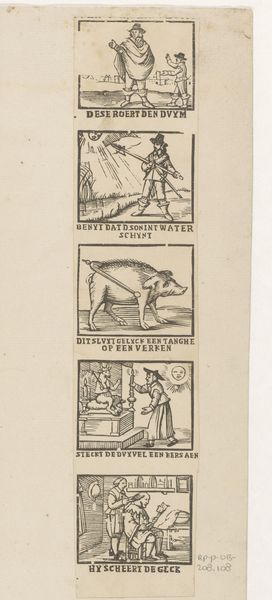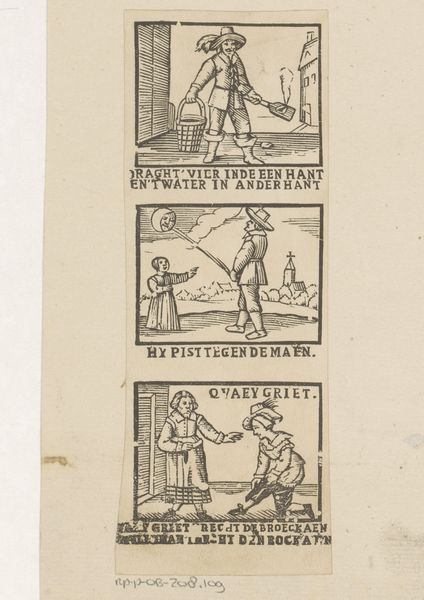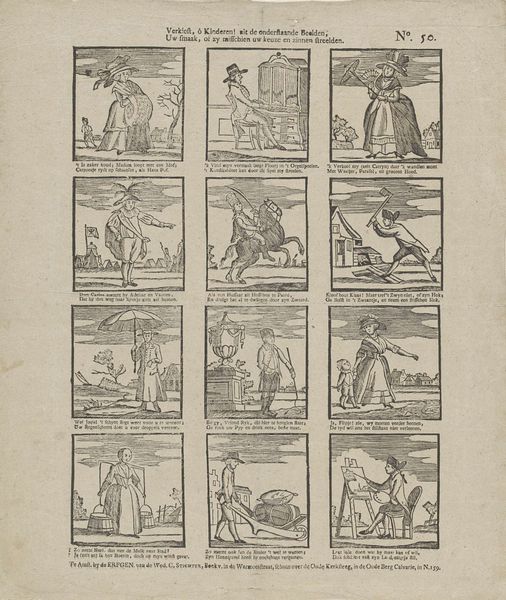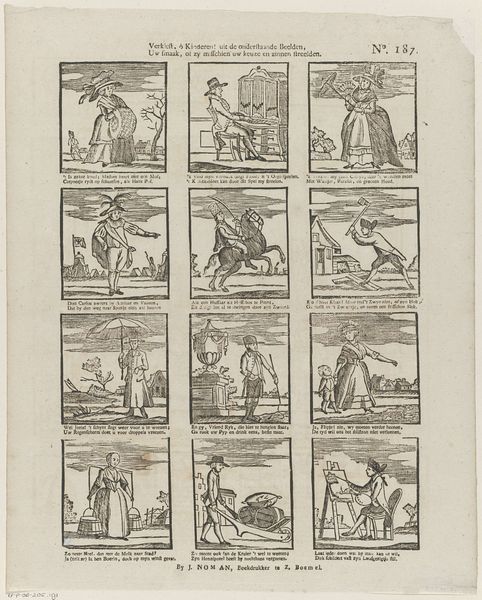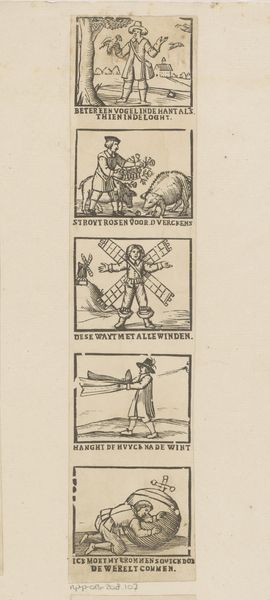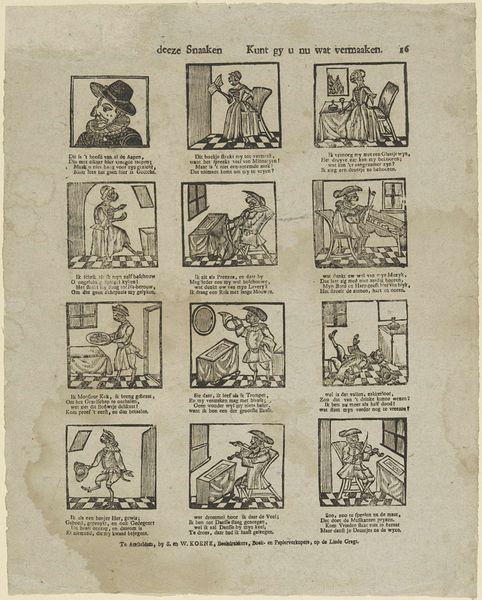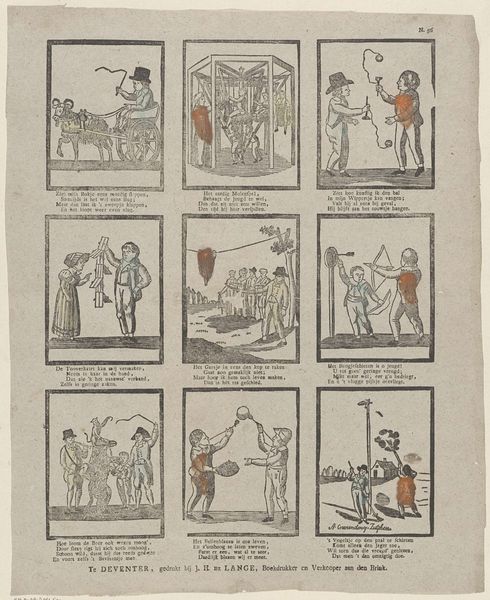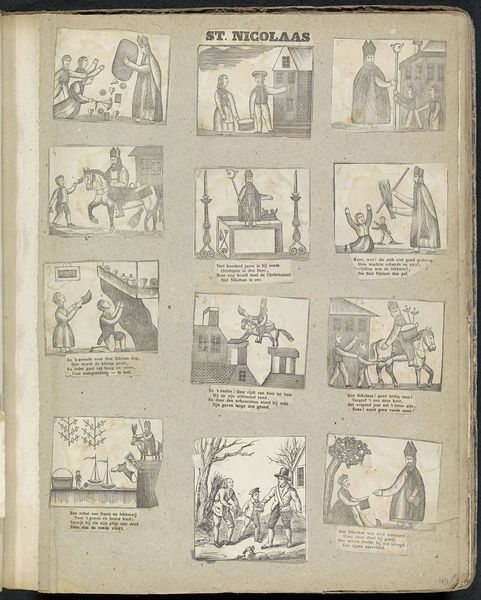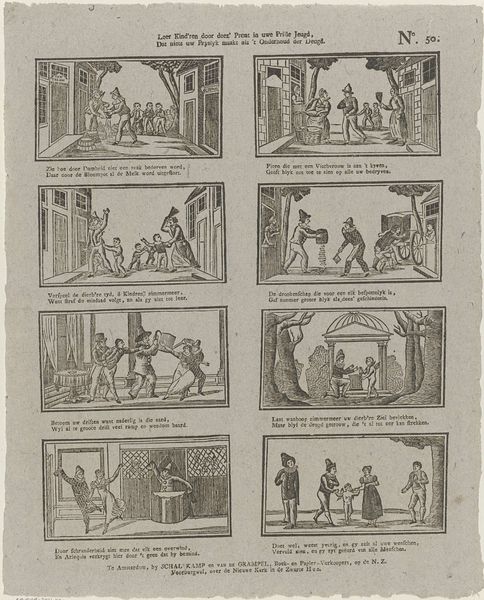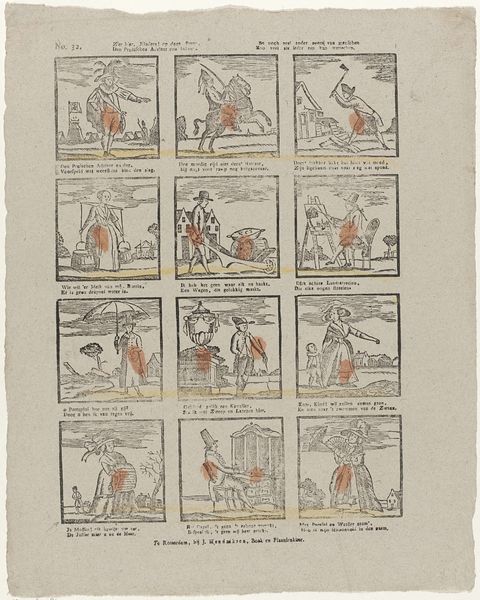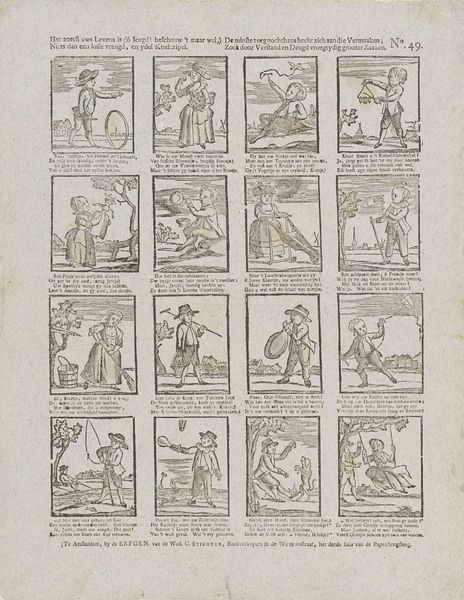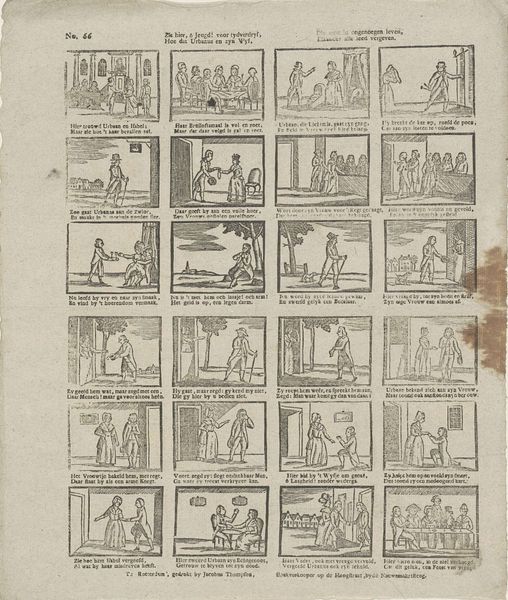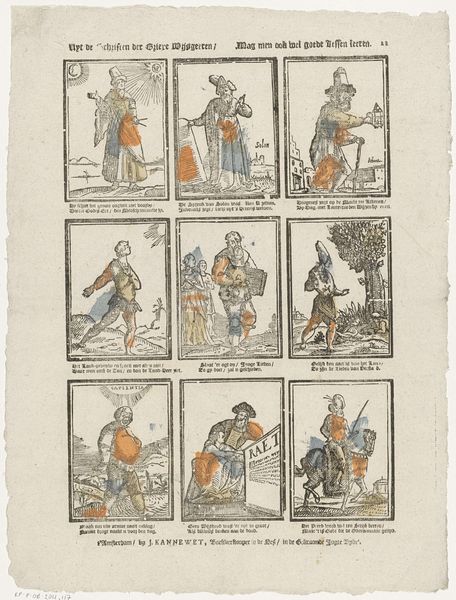![Afbeeldingh hoe seven wyven vechten om een mans broeck ende de vrou de broeck aentrecht [(...)] by Anonymous](/_next/image?url=https%3A%2F%2Fd2w8kbdekdi1gv.cloudfront.net%2FeyJidWNrZXQiOiAiYXJ0ZXJhLWltYWdlcy1idWNrZXQiLCAia2V5IjogImFydHdvcmtzLzIwYzFmNTYzLTExZjEtNDcxOS1hYmU4LWI0OTg4ZDYwNWI3MC8yMGMxZjU2My0xMWYxLTQ3MTktYWJlOC1iNDk4OGQ2MDViNzBfZnVsbC5qcGciLCAiZWRpdHMiOiB7InJlc2l6ZSI6IHsid2lkdGgiOiAxOTIwLCAiaGVpZ2h0IjogMTkyMCwgImZpdCI6ICJpbnNpZGUifX19&w=3840&q=75)
Afbeeldingh hoe seven wyven vechten om een mans broeck ende de vrou de broeck aentrecht [(...)] Possibly 1700 - 1865
0:00
0:00
print, woodcut
#
medieval
#
narrative-art
# print
#
figuration
#
woodcut
#
genre-painting
Dimensions: height 155 mm, width 57 mm
Copyright: Rijks Museum: Open Domain
Editor: We're looking at an intriguing woodcut from the Rijksmuseum, possibly dating between 1700 and 1865. It’s called "Afbeeldingh hoe seven wyven vechten om een mans broeck ende de vrou de broeck aentrecht," which roughly translates to "Image of how seven wives fight over a man's pants and the woman puts the pants on straight". It's packed with bizarre little scenes and the thick lines of the woodcut really lend themselves to a folk-art feel. What do you make of this, especially given its medium? Curator: Well, it's a print, isn't it? Not some precious painting meant for a noble's wall. Look at how readily these prints could be reproduced! They brought visual narratives—often bawdy, satirical ones like this—directly to the populace. Think about the means of production: a relatively accessible skill (woodcutting), cheap materials, wide distribution. These images served almost as proto-memes; instantly consumable, disposable, and impactful within their social context. I see commentary on gender roles, maybe even early forms of political dissent coded within everyday scenarios. The material is the message. Editor: So, the woodcut medium itself gives it significance. Does that challenge the way we usually value art? Curator: Absolutely! Traditionally, art history focused on unique, singular objects crafted by 'masters'. But consider the labor involved here, the repetitive action of carving, the intended mass consumption. Where does 'high art' begin and this sort of production end? Are those distinctions even valid when something like this print had such a direct effect on the way people thought about the world? What kind of social dynamics do you see at play given these scenes were available for viewing at home? Editor: That’s fascinating. I hadn’t really considered how the materials and distribution challenge art historical narratives so directly. Thanks! Curator: And I hadn’t considered that I’m starting to enjoy thinking about proto-memes.
Comments
No comments
Be the first to comment and join the conversation on the ultimate creative platform.
